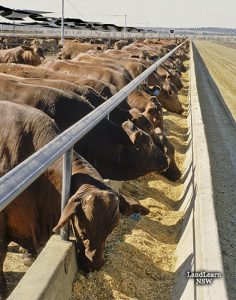Frequently Asked Questions About the Study:
Średnicka-Tober D. et al. (2016). “Composition differences between organic and conventional meat; a systematic literature review and meta-analysis.” British Journal of Nutrition, February 16, 2016.
Authors: Dominika Średnicka-Tober, Marcin Barański, Chris Seal, Roy Sanderson, Charles Benbrook, Håvard Steinshamn, Joanna Gromadzka-Ostrowska, Ewa Rembiałkowska, Krystyna Skwarło-Sońta, Mick Eyre, Giulio Cozzi, Mette Krogh Larsen, Teresa Jordon, Urs Niggli, Tomasz Sakowski, Philip C. Calder, Graham C. Burdge, Smaragda Sotiraki, Alexandros Stefanakis, Halil Yolcu, Sokratis Stergiadis, Eleni Chatzidimitriou, Gillian Butler, Gavin Stewart and Carlo Leifert
- Major Findings
- Implications to Consumers
- Other Meat Nutritional Quality Research
- How does this study improve upon earlier ones?
- Impacts to Meat Production
- About the Study
- References
See also:
Major Findings
Q: What is a meta-analysis?
A: Meta-analysis is a statistical tool to extract more robust insights from several different studies focused on the same basic question, like “do organic meat products offer nutritional advantages for consumers, compared to conventionally raised meat?” Or, do drugs of “X” class prevent cardiovascular disease?
Scientists have continuously improved the sensitivity and rigor of meta-analyses methods. The University of Newcastle study team included leading experts in meta-analysis methods, and based its findings on the most sophisticated and recommended methods for the conduct of a meta-analysis on the connections between nutrient content in food and human health outcomes.
Q: What were this study’s key findings?
 A: Organic meat is healthier because it has a markedly more desirable composition of fatty acids.
A: Organic meat is healthier because it has a markedly more desirable composition of fatty acids.
The concentration of health-promoting poly-unsaturated fatty acids (PUFAs) in organic meats was, on average, 23% higher than in corresponding meat products from conventional managed livestock farms.
The levels of health-promoting omega-3 fatty acids were, on average, 47% higher than in conventional meat, and the overall concentration of the critical, long-chain PUFA fatty acids was also markedly higher in organic versus conventional meat.
In addition to higher concentrations of health-promoting fatty acids, the team found that the levels of some pro-inflammatory fats were lower in organic meat products. The levels of the saturated fatty acids myristic acid were, on average, 18% lower, while the levels of palmitic acid were 11% lower.
[Note to readers – see Good Fat, Bad Fat and this detailed primer on the differences between different types of fat].The Newcastle team also reported a trend towards higher iron (Fe), but lower copper (Cu) and cadmium (a toxic ‘heavy’ metal) levels in organic meat, although further studies are required to confirm these results.
Implications to Consumers
 Q: Are these differences important to consumers, given typical levels and patterns of meat consumption in the U.S.?
Q: Are these differences important to consumers, given typical levels and patterns of meat consumption in the U.S.?
A: Meat is a major source for omega-3 fatty acids in the diet of people throughout the U.S. (and E.U.), especially for individuals eating little or no fish. Both the U.S. and European Union recommend a substantial increase in average, daily per capita intakes of omega-3 fatty acids.
Given the magnitude of differences reported in this study, a switch to consuming mostly organic meat would allow a typical consumer to reduce meat consumption by 30%, while maintaining current intakes of omega-3 fatty acids from meat. The recently released Dietary Guidelines for America point to the need for roughly a 30% reduction in meat consumption.
Alternatively, consumers not changing meat product intakes, but switching to mostly organic meat brands would increase their intake of omega-3 fatty acids by almost 50%, and without increasing saturated fat or total caloric intake.
This second option has important economic ramifications, given that other common dietary sources of omega 3 fatty acids are relatively expensive per unit of omega-3 fatty acid (e.g., salmon, other oily fish). The opportunity to increase omega-3 intakes ~50% by choosing organic meat brands is another factor consumers should take into account when deciding whether the premium price for organic meat products is justified.
A recent human cohort study was carried out in the Netherlands focused on the effect of organic milk consumption on eczema in infants through age two. It found that eczema was significantly reduced in children from families consuming organic milk, rather than non-organic milk (Kummerling et al. 2008). The authors hypothesize that this impact may have been caused by the higher omega-3 fatty acid concentrations in organic milk, since there is increasing evidence for anti-allergic effects of omega-3 fatty acids (Calder et al. 2010).
Q: Are the nutritional advantages reported in this study on organic meat representative of the organic versus conventional meat brands now available in the U.S.?
A: To some degree, yes. The team located 67 valid, high-quality studies, six of which came from the U.S., and hence reflect domestic USA organic and conventional meat production. In contrast, Spain, the U.K., and Italy were the source of 30 studies – collectively five-times more than the U.S. Only one, relatively old (1997) study published from the U.S. focused on beef meat quality.
Other Meat Nutritional Quality Research
Q: Is there any more recent information on organic beef on the market in the U.S.?
A: Fortunately yes. A well-designed study by a University of Minnesota team was published in the Journal of Dairy Science, but after the cut-off date for studies included in the University of Newcastle meta-analysis. The study was entitled “Fatty acid profiles, meat quality, and sensory attributes of organic versus conventional dairy beef steers” (Bjorklund et al., 2014).
The University of Minnesota-based team raised three groups of dairy cow steers to slaughter weight under typical, U.S. feedlot conditions. One group was fed a conventional, grain-based ration. The second group was managed in compliance with organic regulations, and fed the same mix of typical, grain-based feeds from certified organic crops. The third group was also raised organically, but was fed a 100% grass and legume forage-based diet (i.e., no grain supplements).
Q: What did this University of Minnesota study report?
A: There were surprisingly large differences in the fatty acid profile of the meat from the three different groups of dairy steers. All the differences were directionally consistent with the results reported by the University of Newcastle team.
But there were surprising — and important — results in the University of Minnesota.
Across the three groups of steers, the total omega-6 level went from 2.5% of total fat by weight in the conventional, grain-based ration group, to 2.1% in the organic group fed the grain-based ration, and then to 0.68% in the organic group fed a grass and legume based diet, and no grain concentrate. The reduction in total omega-6 levels in the group 3 steers is clearly sizable, and health-promoting.
For total omega-3 fatty acids (most of us need more), the levels across the three groups were 0.19%, 0.21%, and 0.5% of total fat. Again, there was relatively little difference between the conventional and organic, grain-based ration groups, but a large difference in the organic group fed 100% grass and legume-based feeds.
The differences in the important omega-6 to omega-3 ratio are even more dramatic. In the conventional group of steers, the omega-6:omega-3 ratio was 12.9, a value clearly in the heart-unhealthy range (anything over ~5:1). This key ratio fell modestly to 10:1 in the organic group also fed a grain-based ration (but organic).
In the organically managed group of steers fed only grass and legume-based feeds, the ratio drops all the way to 1.4, a ratio well within the heart-healthy zone.
The differences in the omega fatty acid profiles of the two groups of steers fed a grain-based diet, in contrast to the steers fed a grass and legume –based diet, are likely representative of the differences between most conventional meat sold now in the U.S., compared to either organic or conventional animal products in the U.S. that are raised solely on a forage-based diet (e.g., grass-fed beef or 100% pasture-forage raised pork).
How does this study improve upon earlier ones?
Q: How does the University of Newcastle study differ from earlier meta-analyses on meat and dairy products?
A: The conclusions of the new study from the University of Newcastle differ significantly from two other meta-analysis studies published in 2009 and 2012 (Dangour et al., 2009; Smith-Spangler et al., 2012).
Both earlier studies reported no significant differences in the nutritional composition of organic versus non-organic meat and dairy products. There are two major reasons why the results of the University of Newcastle study differ so dramatically.
First, the University of Newcastle team based its meta-analysis on 67 studies that met a series of strict, quality-based inclusion criteria. The earlier Dangour et al (2009) study was based on only 11 studies focused on meat products (all of which were also included in he Newcastle study), while the Smith-Spangler et al (2012) identified less than two-dozen studies. But since these earlier studies, several high-quality studies have been conducted and published.
As a result, the University of Newcastle team had a much larger and higher-quality science base to draw upon in conducting its meta-analysis. If either the Dangour or Smith-Spangler led team had access to the larger and more robust list of studies accessible to the Newcastle team, it is likely their results would have been similar to those reported by the Newcastle team, despite modest differences in inclusion criteria and meta-analysis methods.
Second, because of the smaller number of studies available to the Dangour and Smith-Spangler-led teams, they chose to combine results for meat and dairy into one product group. This methodological step made it possible for them to include an ample number of comparisons for meat and dairy products to conduct meta-analyses, but also had the effect of muddying the results, because of differences in how the nutritional composition of milk, in contrast to meat, varies as a result of organic versus conventional management.
Impacts to Meat Production

Q: What important new insights have been gained on the impacts of organic meat production?
A:
- Livestock production methods affect meat nutritional quality.
Organic production standards require that livestock have access to the outdoors and pasture. Organic farmers worldwide feed much less corn and grain concentrates than conventional farmers, and rely more heavily on grazing and other forage-based feeds.
- Organic meat contains higher concentrations of health-promoting fats, and generally lower levels of fats that promote heart disease and inflammation.
The differences are most significant with the poly-unsaturated group of fatty acids. Organic meat products have much more desirable levels of omega-3 fatty acids, and less of two saturated fatty acids that promote heart disease (myristic and palmitic acids).
- Consumption of organic meat products can improve overall diet quality, and reduce the risk of several diet-driven, chronic health problems.
Meat is a substantial source of calories, protein, and omega-3 fatty acids in the U.S. diet. There is strong evidence that the differences in the fatty acid profile of organic versus conventional meat improve long-term health trajectories across the U.S. population by reducing the risk of heart disease, diabetes, certain cancers, dementia, and obesity.
Q: Why are organic meat products healthier?
A: What animals eat determines how nutritious animals products are for us. Livestock on organic farms worldwide consume much more grass and legume-based forage feeds, and much less corn, soybean, and other grain-based concentrates.
Grasses and forage legumes like clover hay are the building blocks of heart-healthy omega-3 fatty acids, while corn, soybeans, and other grains contain nutrients that animals transform into a far less-healthy mix of fatty acids.
Organic livestock production standards are strictly regulated in the U.S. and the European Union. Any food bearing the USDA “certified organic” label must legally meet standards set forth by the National Organic program (NOP). Organic standards require that livestock must have access to the outdoors and pasture during the growing season and/or when weather conditions permit.
In addition, on-farm economics plays a key role. Certified organic feed grains are expensive in the U.S. and Europe, and there are periodic problems with both supply and feed quality. For this reason, organic livestock producers strive to incorporate as much home-grown forage as possible in the diets of their animals.
The cheapest pounds of weight gain for organic beef, lamb, and goat producers occur during the days when animals are getting all, or most of their daily feed rations from actively growing grasses and legumes. This is especially true on organic or grass-fed operations that have mastered intensive, rotational grazing systems.
Q: Why do organic standards alter meat quality?
A: Hundreds of controlled experimental studies in the U.S. and Europe conclude that differences in the fatty acid profiles of organic and conventional meat are primarily driven by differences in what animals eat.
Studies comparing meat quality from forage-based diets compared to the grain-based diets typical for intensive, conventional livestock systems show forages result in higher levels of PUFA and omega-3 fatty acids, and lower omega 6s, myristic and palmitic acid in beef and lamb (Nuernberg et al. 2005; Fisher et al. 2000). A similar trend was also found when meat from free-range pigs with access to pasture was compared to meat from pigs raised in confinement (Nilzén et al. 2001).
About the Study
Q: Who conducted and funded the study?
A: An international team of 25 scientists carried out the study over a three-year period. The team was led by Dr. Carlo Leifert, University of Newcastle, Northumberland, UK. The team included one U.S. scientist, Charles Benbrook. Benbrook’s contributions to the study were carried out while he was a Research Professor at Washington State University (position ended May 15, 2015).
The total cost of the meat and dairy meta-analyses conducted by the Newcastle team was about $600,000 Euro, of which about 75% came from research grants from the European Commission, and ~25% was from the Sheepdrove Trust, a U.K.-based philanthropic institution.
The entire database generated and used for this analysis is freely available on the Newcastle University website (http://research.ncl.ac.uk/nefg/QOF) for the benefit of other experts and interested members of the public.
Q: Why was the study carried out?
A: Consumer interest in the safety, nutritional quality, and environmental impacts of organic food and farming has grown steadily over the last two decades. While hundreds of studies have assessed the impacts of organic farming on the nutritional quality of organic fruits, vegetables, grains, and nuts, far fewer research projects have focused on organic meat and dairy products. In addition, until this study, there has been no meta-analysis published in the open scientific literature focused on the nutritional quality attributes of organic meat products.
The European Commission recognized this gap in published studies, and provided the support needed by the University of Newcastle team to carry out this study on organic meat products. The European Commission also supported a 2014 study led by Dr. Leifert that was focused on the nutritional differences in organic versus conventional plant-based foods, published in the British Journal of Nutrition in July 2014 (Baranski et al. 2014). A meta-analysis on milk/dairy products was also published February 16, 2016 in the British Journal of Nutrition (Średnicka-Tober et al. 2016).
Q: What were the study’s limitations?
A: The biggest limitation arises from the relatively, small number of high-quality, peer-reviewed studies on organic versus conventional meat, especially studies focused on U.S. production systems and practices. The meta-analyses by University of Newcastle teams on dairy products and plant-based foods drew upon 196 studies (dairy) and 343 papers (plant-based foods) respectively, far more than the 67 available on organic versus conventional meat.
Because of the limited number of studies overall, and even smaller numbers within specific categories of meat products (beef, pig, lamb, goal, poultry, rabbit), the Newcastle team had to combine results across livestock species for the majority of individual nutrients studied. In addition, for many nutritionally relevant compounds (e.g. minerals, vitamins, antioxidants toxic metals, pesticides), there were insufficient numbers of valid comparisons to even conduct meta-analyses.
References
Bjorklund EA, Heins BJ, DiCostanzo, Chester-Jones H (2014) Fatty acid profiles, meat quality, and sensory attributes of organic versus conventional dairy beef steers. J. Dairy Science 97: 1828-1834 http:dx.doi.org/10.3168/jds.2013-6984
Brantsæter, A.L. et al. (2015) Organic food consumption during pregnancy and Hypospadia and Cryptorchidism at birth: The Norwegian Mother and Child Cohort Study (MoBa). Environmental Health Perspectives on line, doi 10.1289/ehp.1409518
Calder P.C,, et al. (2010) Is there a role for fatty acids in early life programming of the immune system? Proc Nutr Soc 69, 373-380.
Christensen, J.S. et al. (2013) Association between organic dietary choice during pregnancy and Hypospadias in offspring: A study of 306 boys operated for hypospadias. The Journal of Jurology 189, 1077-1082
Dangour, A.D., et al. (2009a) Nutritional quality of organic foods: A systematic review. Am J Clin Nutr 90, 680-685.
Dangour AD, Dodhia S, Hayter A et al. (2009b) Comparison of composition (nutrients and other substances) of organically and conventionally produced foodstuffs: a systematic review of the available literature. Report for the Food Standards Agency. Nutrition and Public Health Intervention Research Unit London School of Hygiene & Tropical Medicine.
European Food Safety Authority (2010) Scientific opinion on dietary reference values for fats, including saturated fatty acids, polyunsaturated fatty acids, monounsaturated fatty acids, trans fatty acids and cholesterol. EFSA Journal 8, 1561
http://www.efsa.europa.eu/sites/default/files/scientific_output/files/main_documents/1461.pdf. accessed 21 January 2016
Fisher, A.V. et al. (2000) Fatty acid composition and eating quality of lamb types derived from four diverse breed x production systems. Meat Sci 55, 141-147. 936
Hoyle D.V. et al. (2004) Age related decline in carriage of ampicillin-resistant Escherichia coli in young calves Appl Environ Microbiol 70, 6927-6930.
Hu, F.B., et al. (2001) Types of dietary fat and risk of coronary heart disease: a critical review. J Am Coll Nutr 20, 5-19.
Kummeling, I., et al. (2008) Consumption of organic foods and risk of atopic disease during the first 2 years of life in the Netherlands. Br J Nutr 99, 598-605.
Leifert, C. et al. (2008) Control of enteric pathogens in ready-to-eat vegetable crops in organic and ‘low input’ production systems: a HACCP-based approach. J Appl Microbiol 105, 931-950.
Nilzen, V. et al. (2001) Free range rearing of pigs with access to pasture grazing effect on fatty acid composition and lipid oxidation products. Meat Sci 58, 267-275.
Nuernberg, K. et al. (2005) Effect of a grass-based and a concentrate feeding system on meat quality characteristics and fatty acid composition of longissimus muscle in different cattle breeds. Livest Prod Sci 94, 137-147. 939
Smith-Spangler C, Brandeau ML, Hunter GE et al (2012) Are Organic FoodsSafer or Healthier Than Conventional Alternatives? A Systematic Review. Ann Intern Medicine 157: 348-366
Średnicka-Tober et al. (2016) Higher PUFA and omega-3 PUFA, CLA, α-tocopherol and iron, but lower iodine and selenium concentrations in organic milk: a systematic literature review and meta- and redundancy analyses. British Journal of Nutrition February 2016
Średnicka-Tober D. et al. (2016) Composition differences between organic and conventional meat; a systematic literature review and meta-analysis. British Journal of Nutrition February 2016
Torjusen, H., et al. (2014) Reduced risk of pre-eclampsia with organic vegetable consumption: results from the prospective Norwegian Mother and Child Cohort Study. British Medical Journal (BMJ) Open 2014 doi 10.1136/bmjopen-2014-006143
WHO (2008) Fats and fatty acids in human nutrition. FAO Food and Nutrition Paper 91 www.who.int/nutrition/publications/nutrientrequirements/fatsandfattyacids_humannutrition/en/

